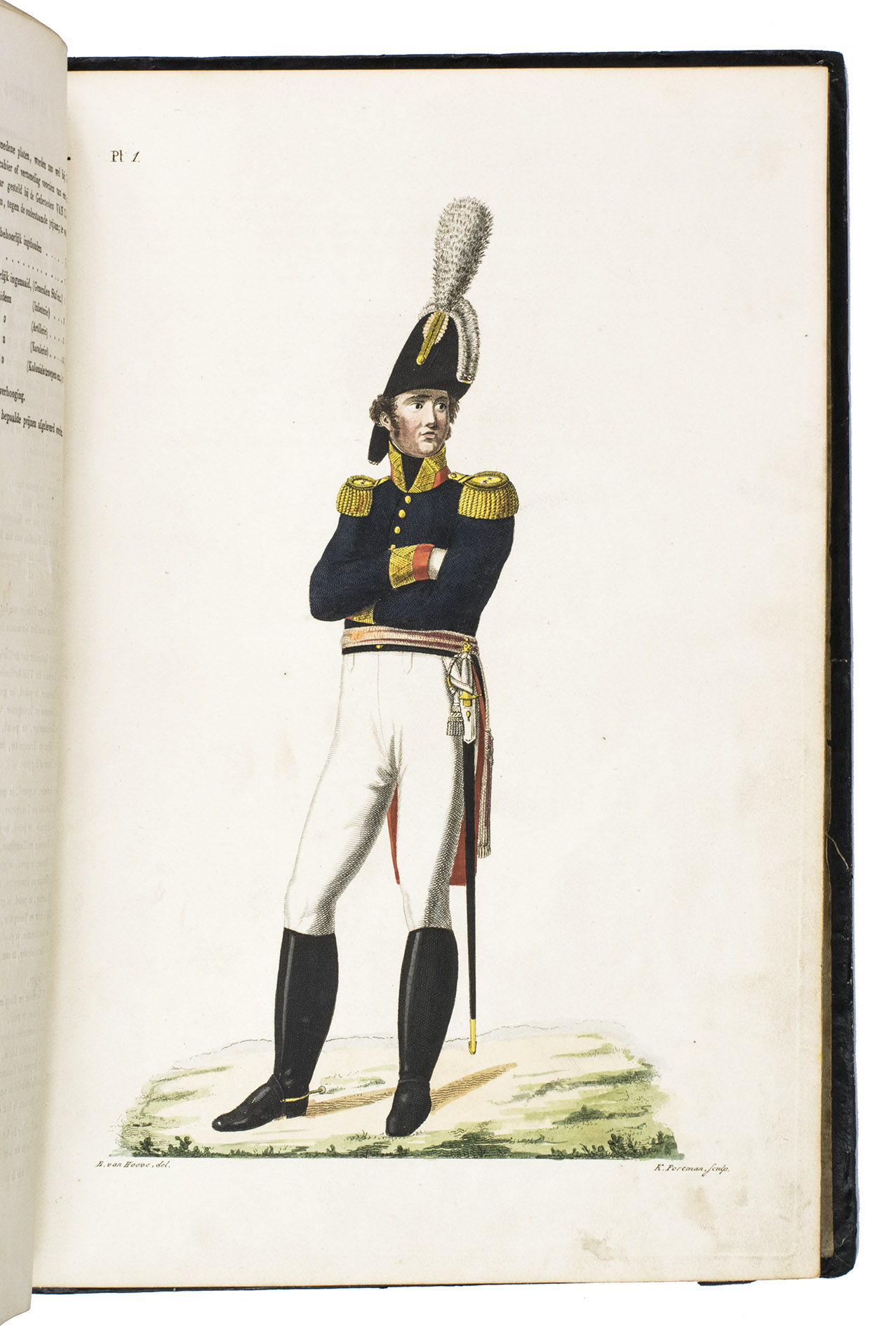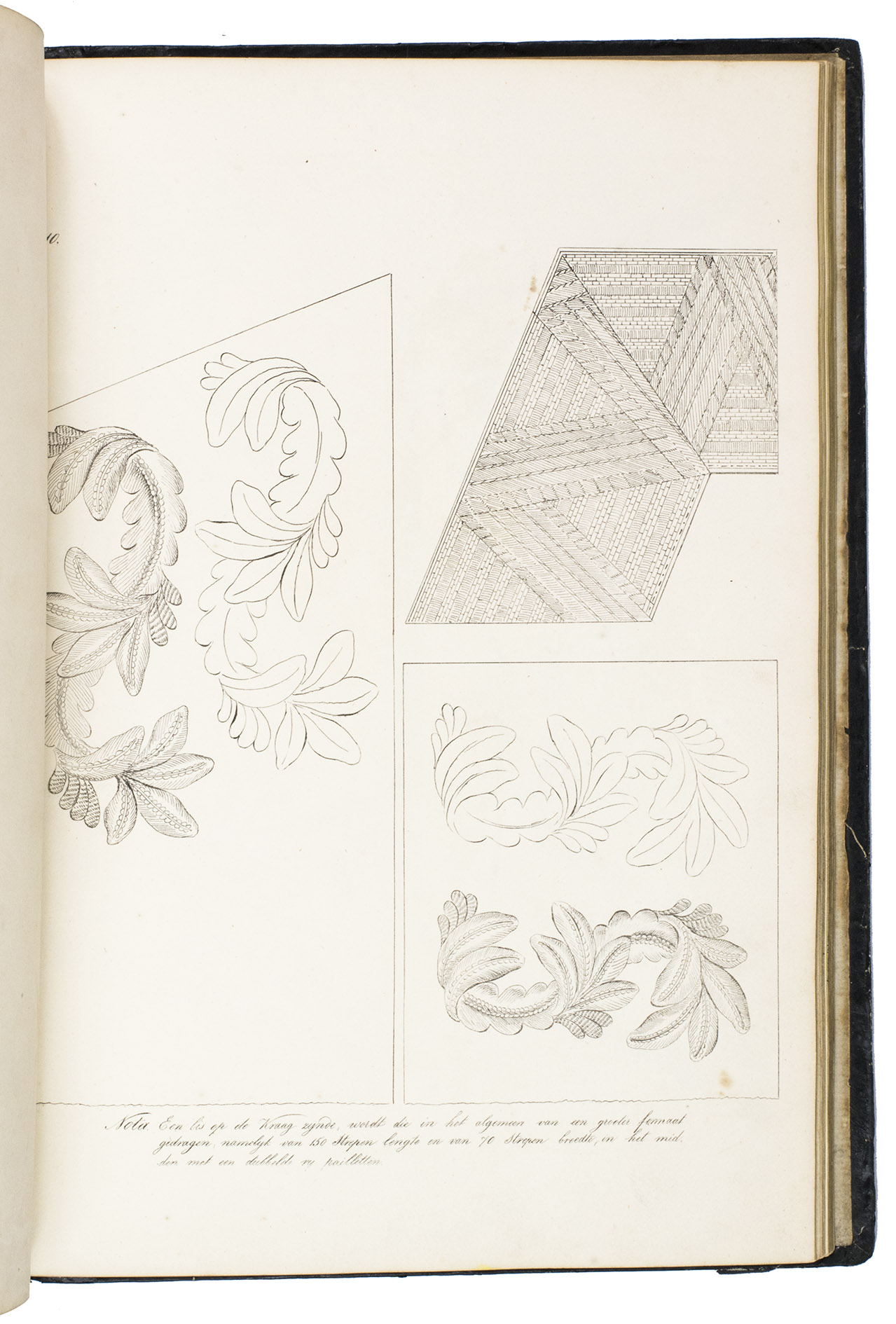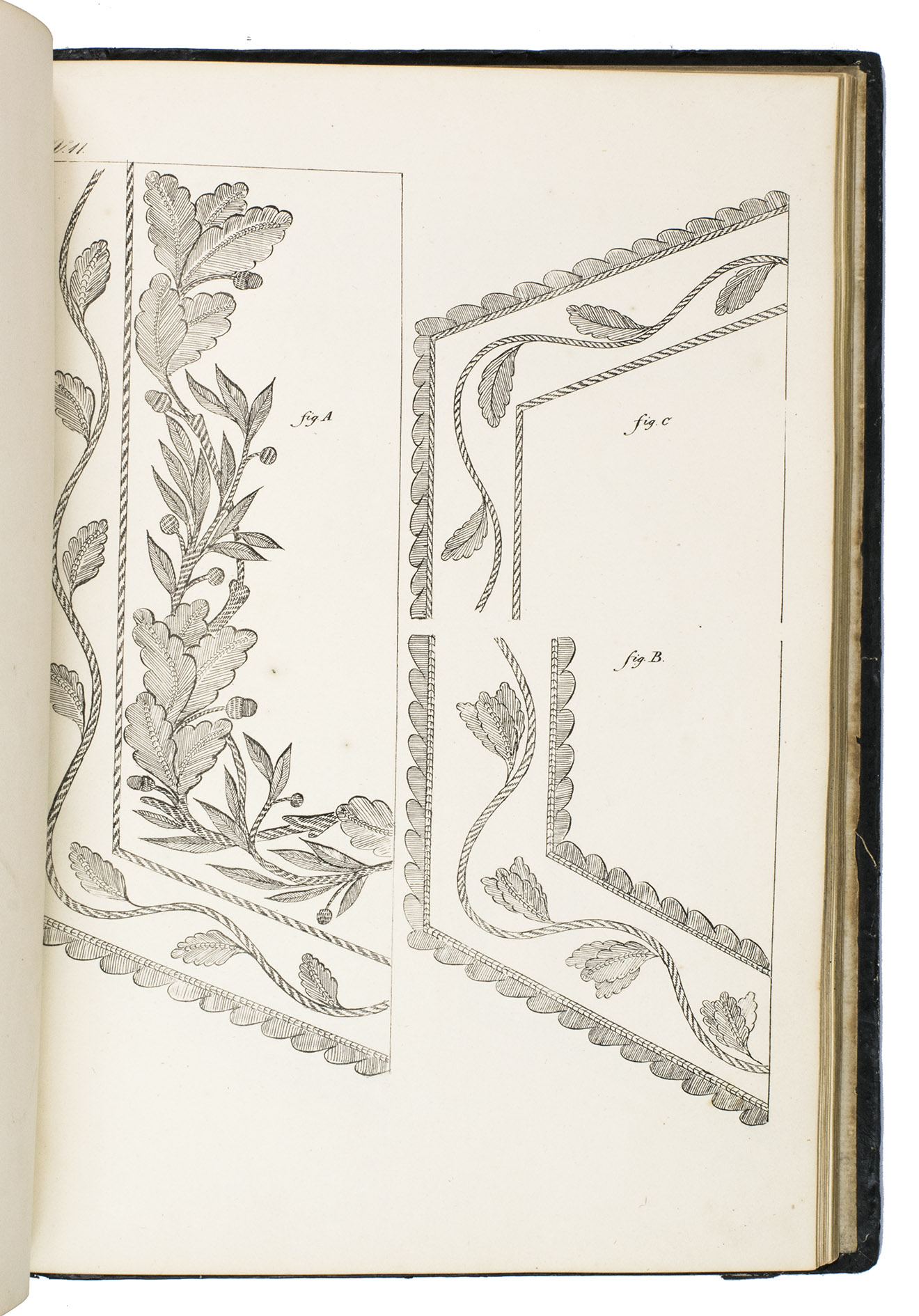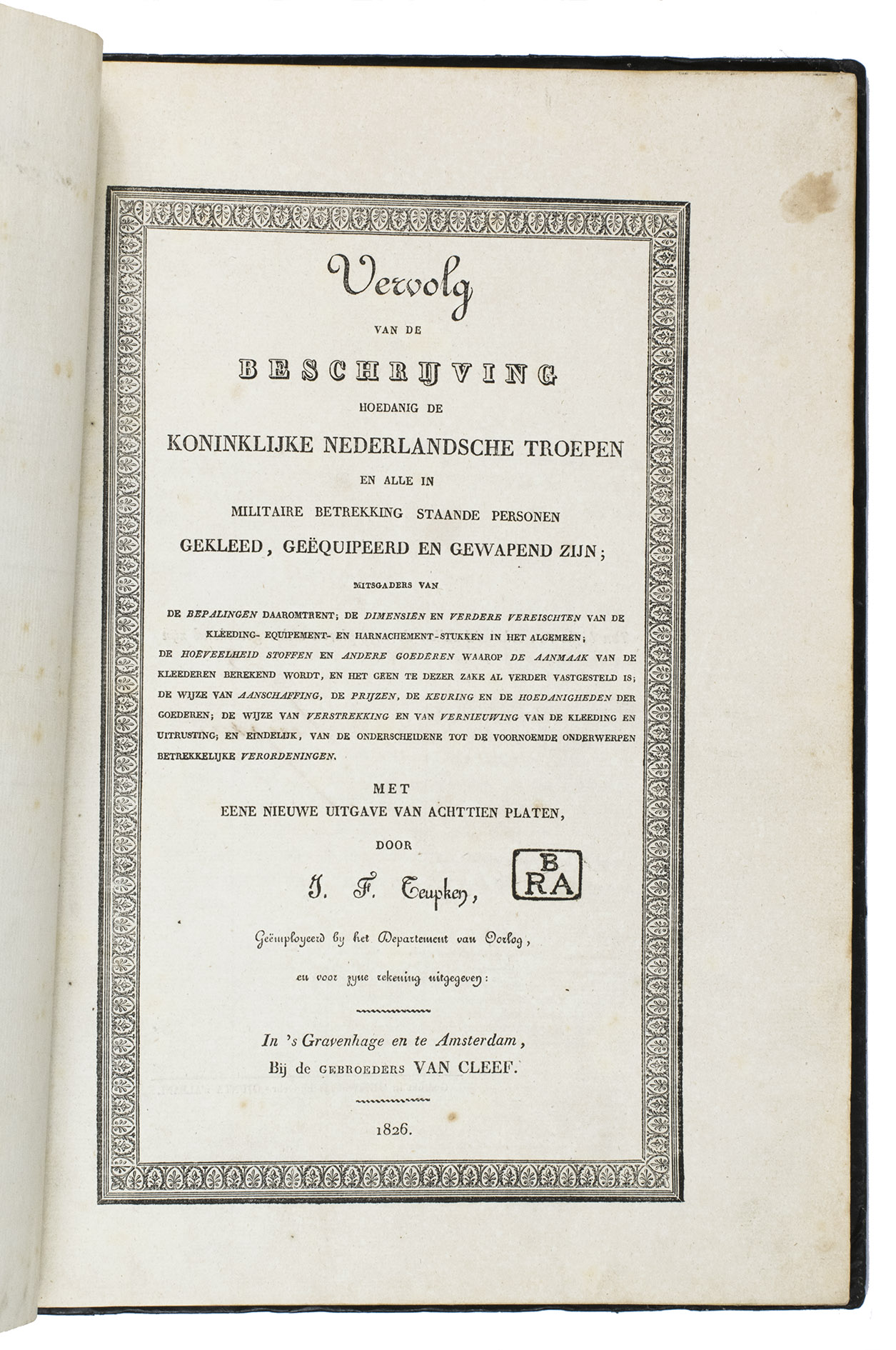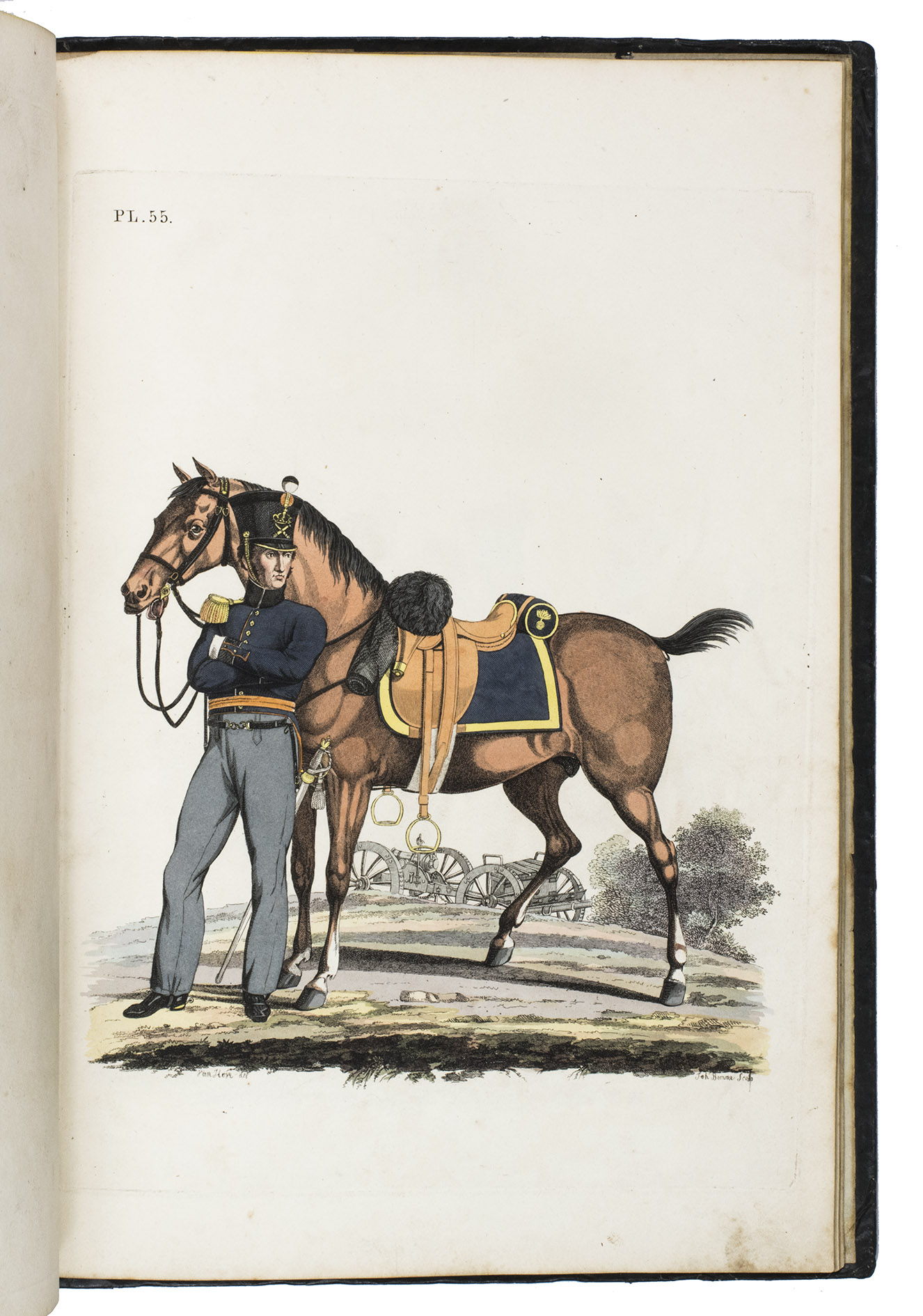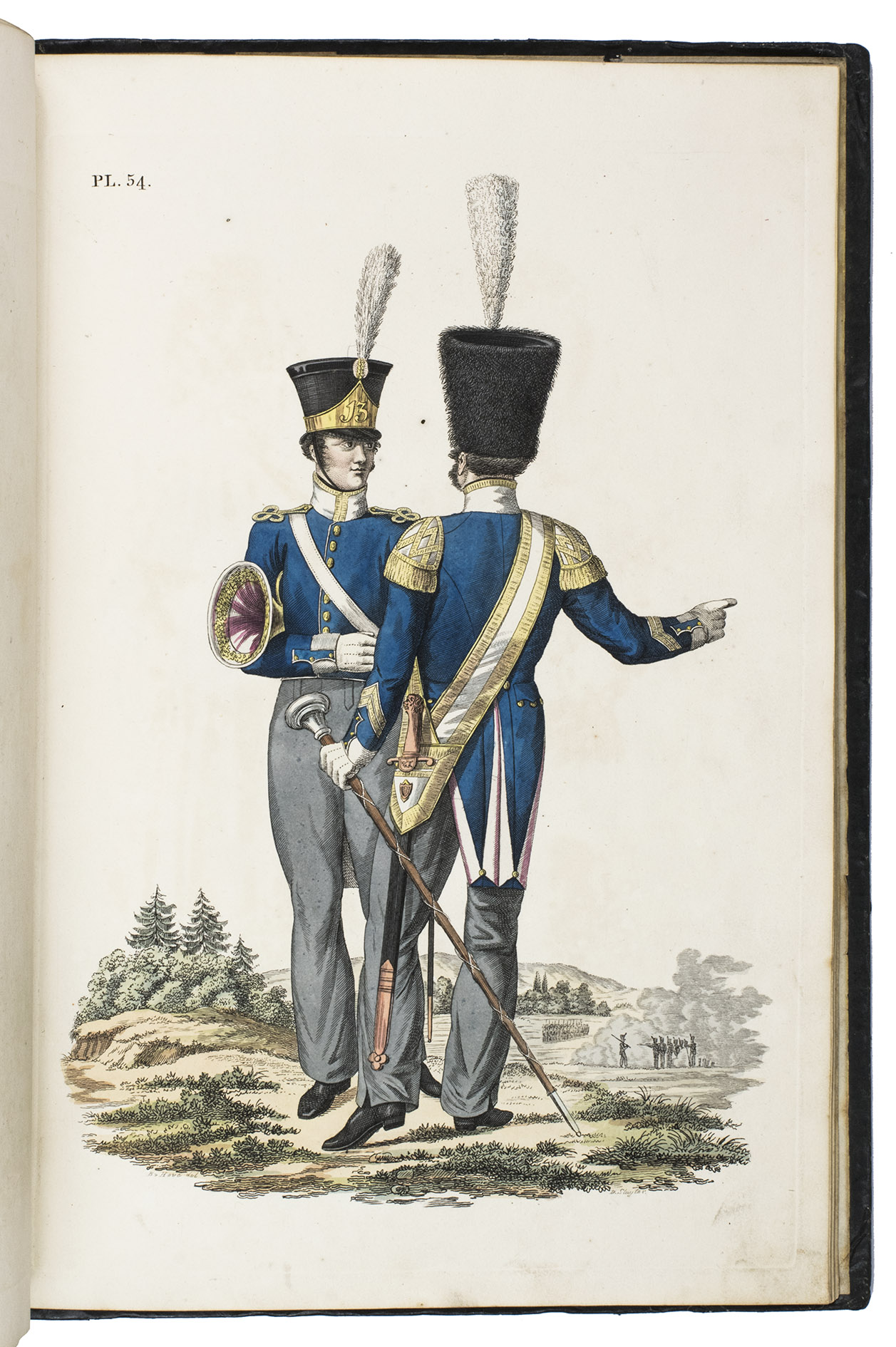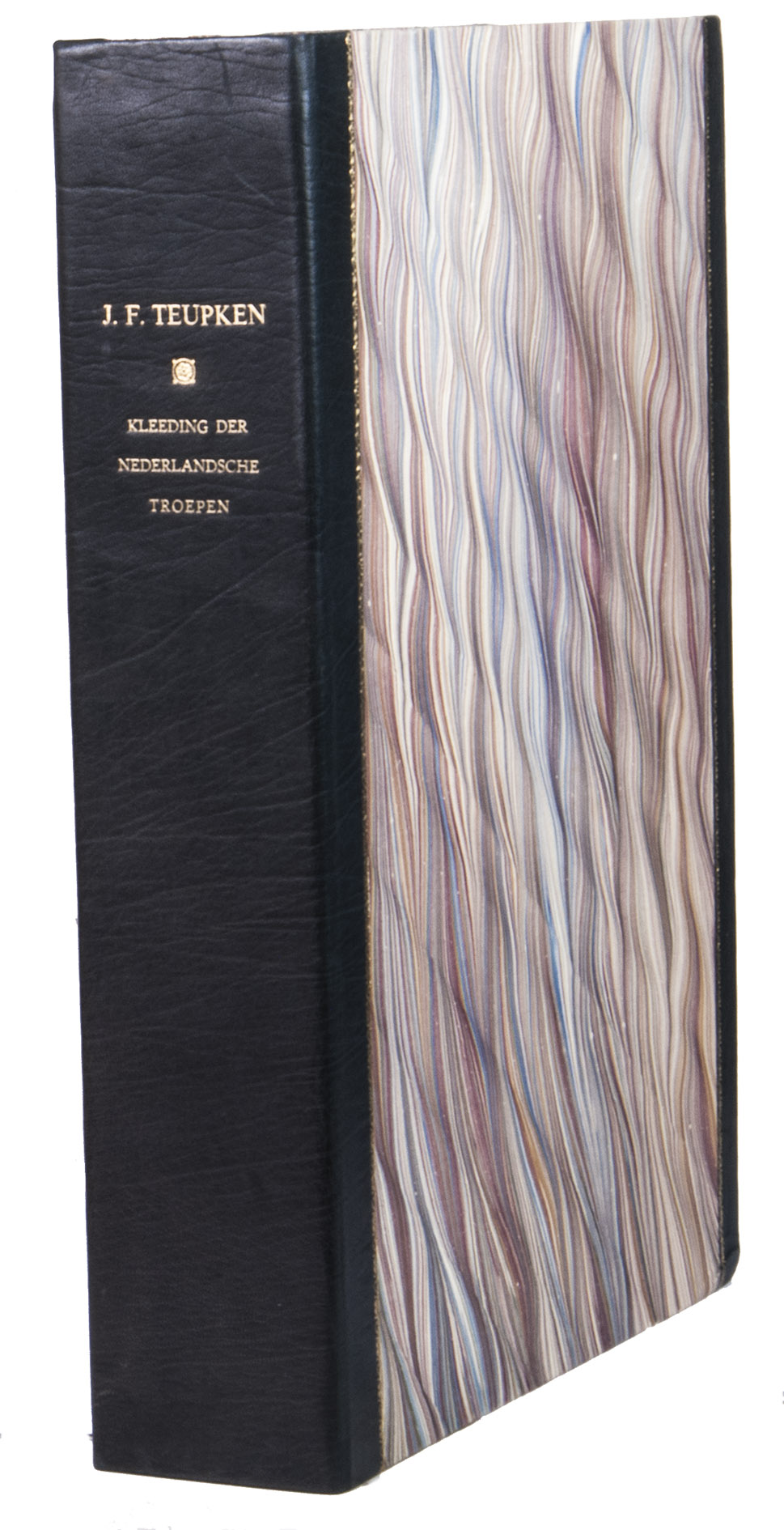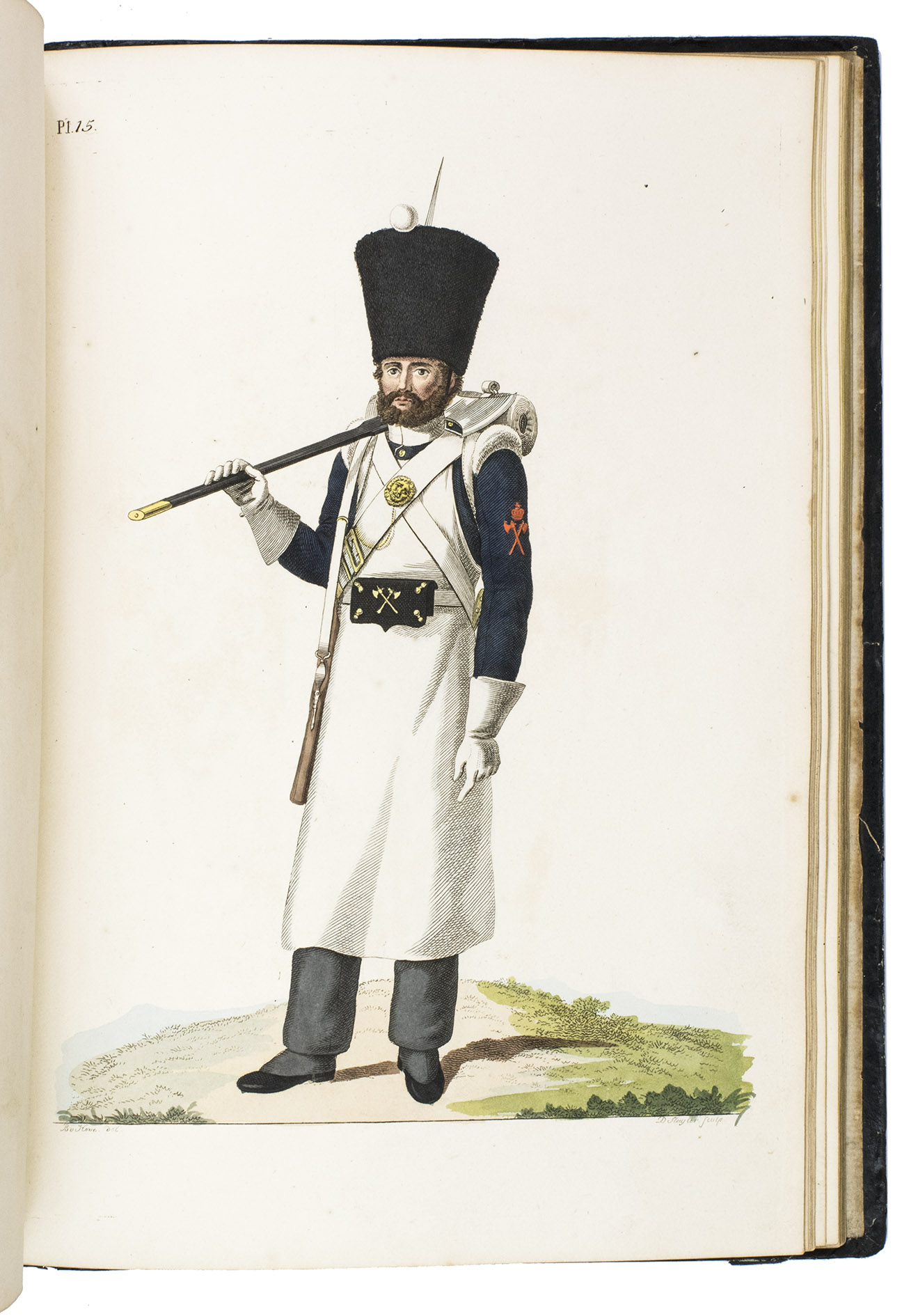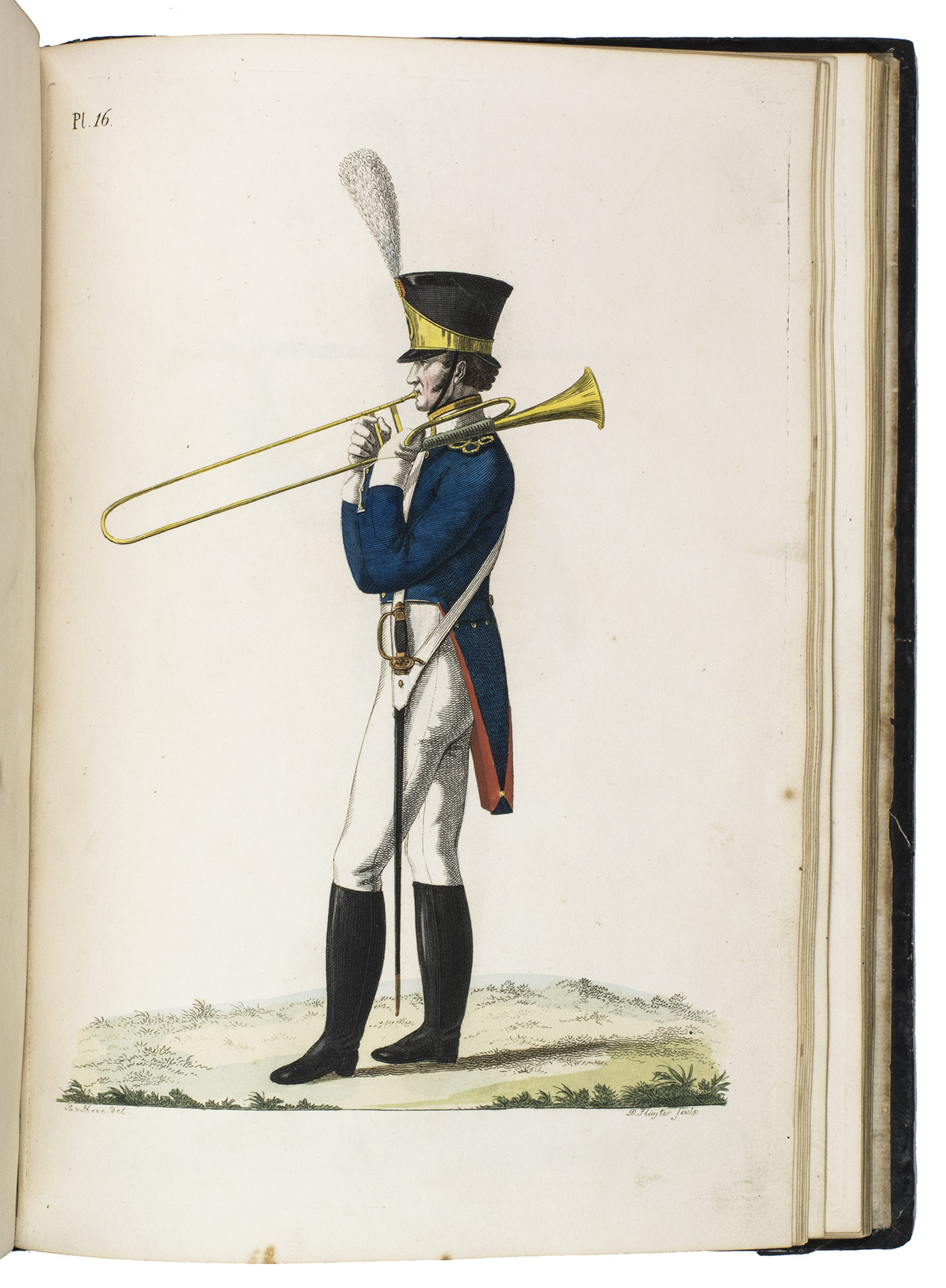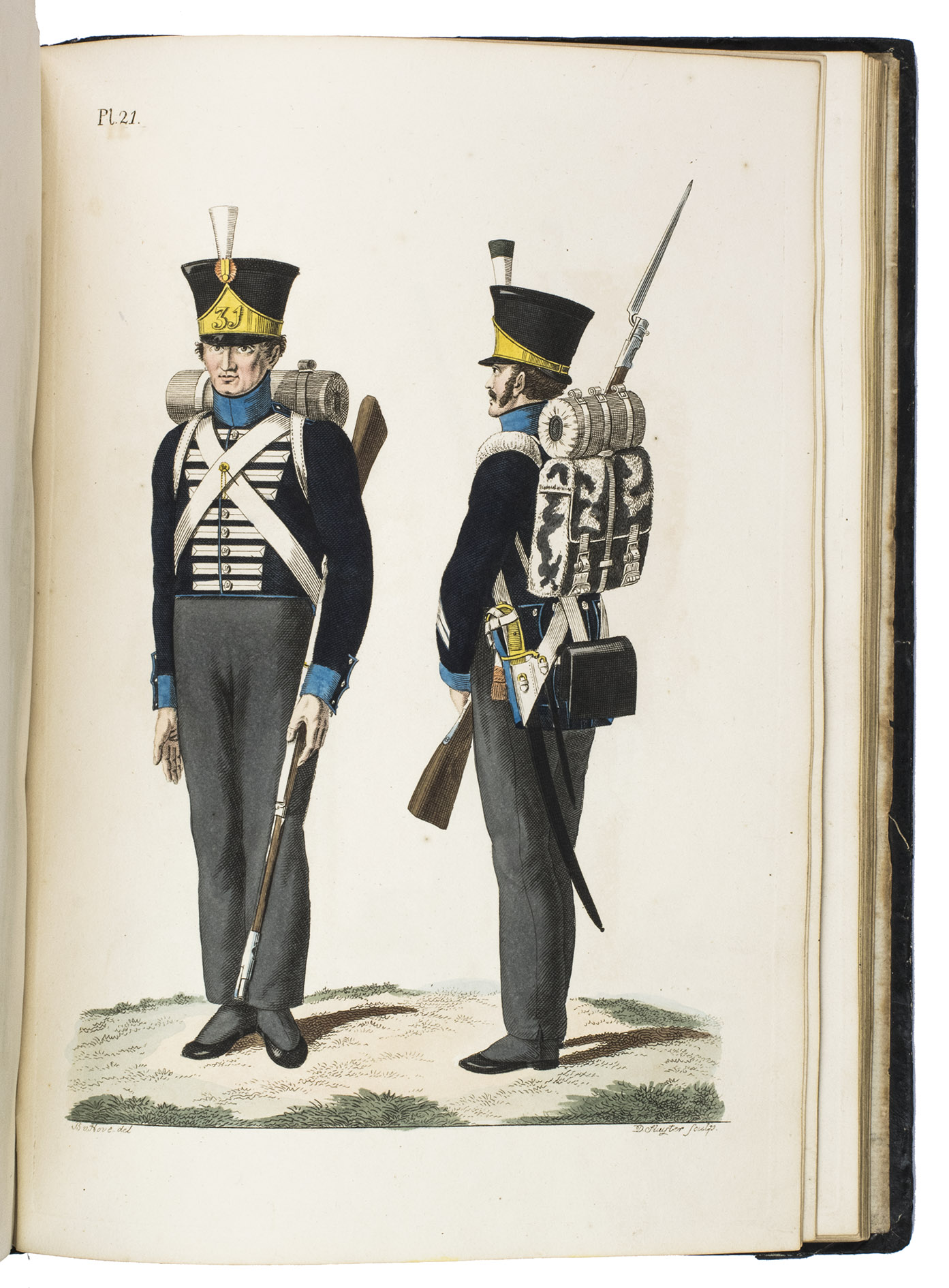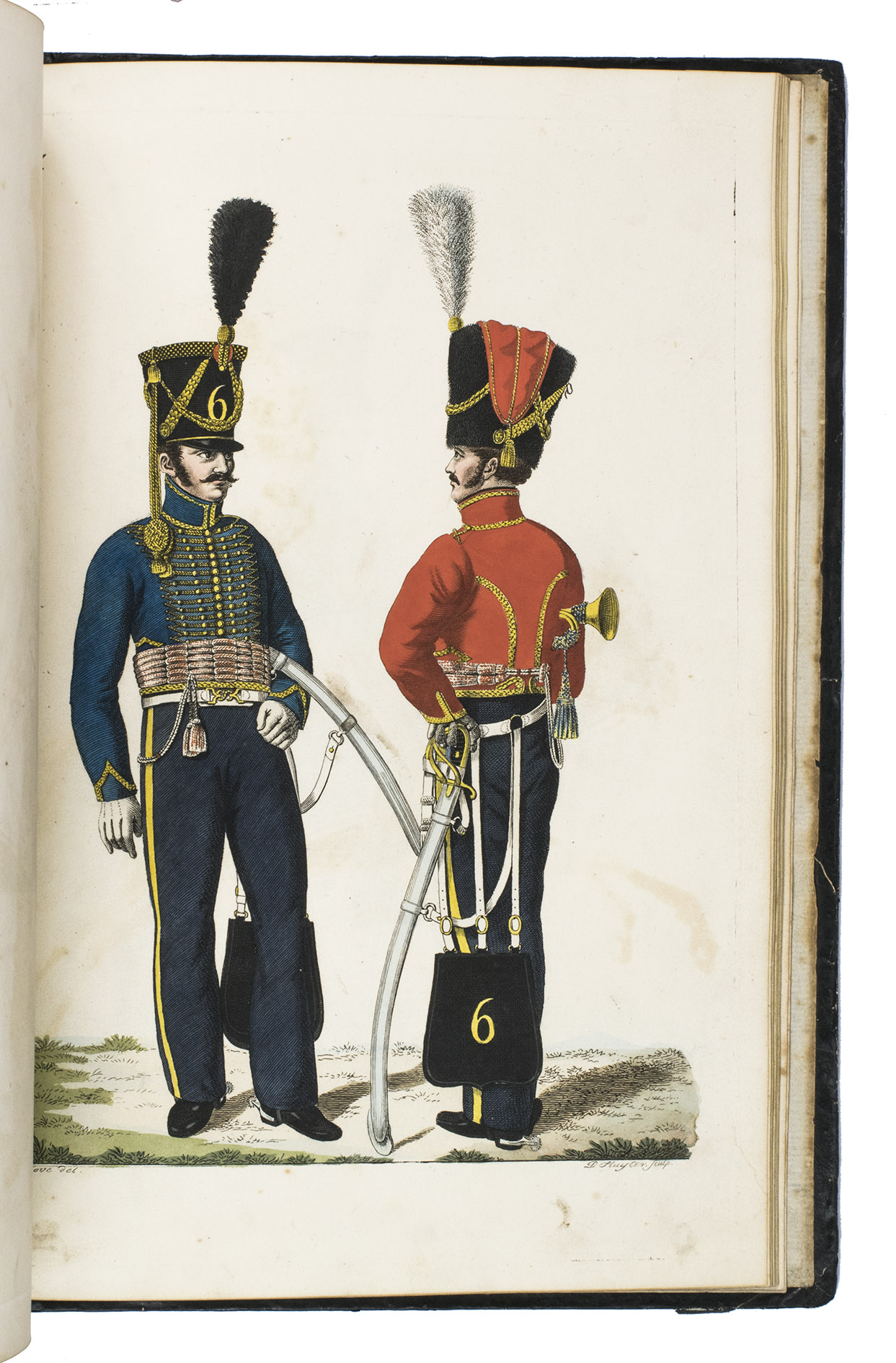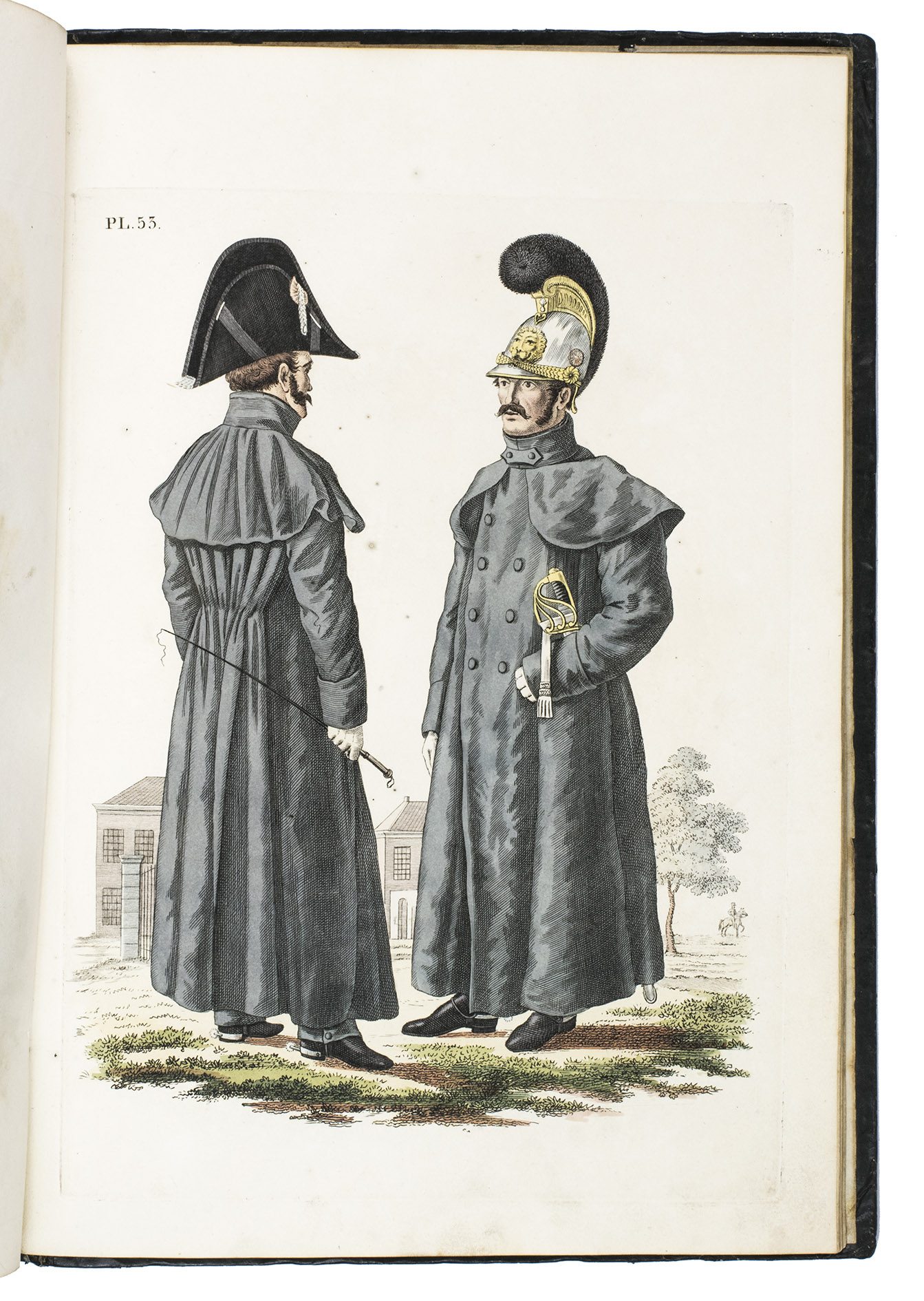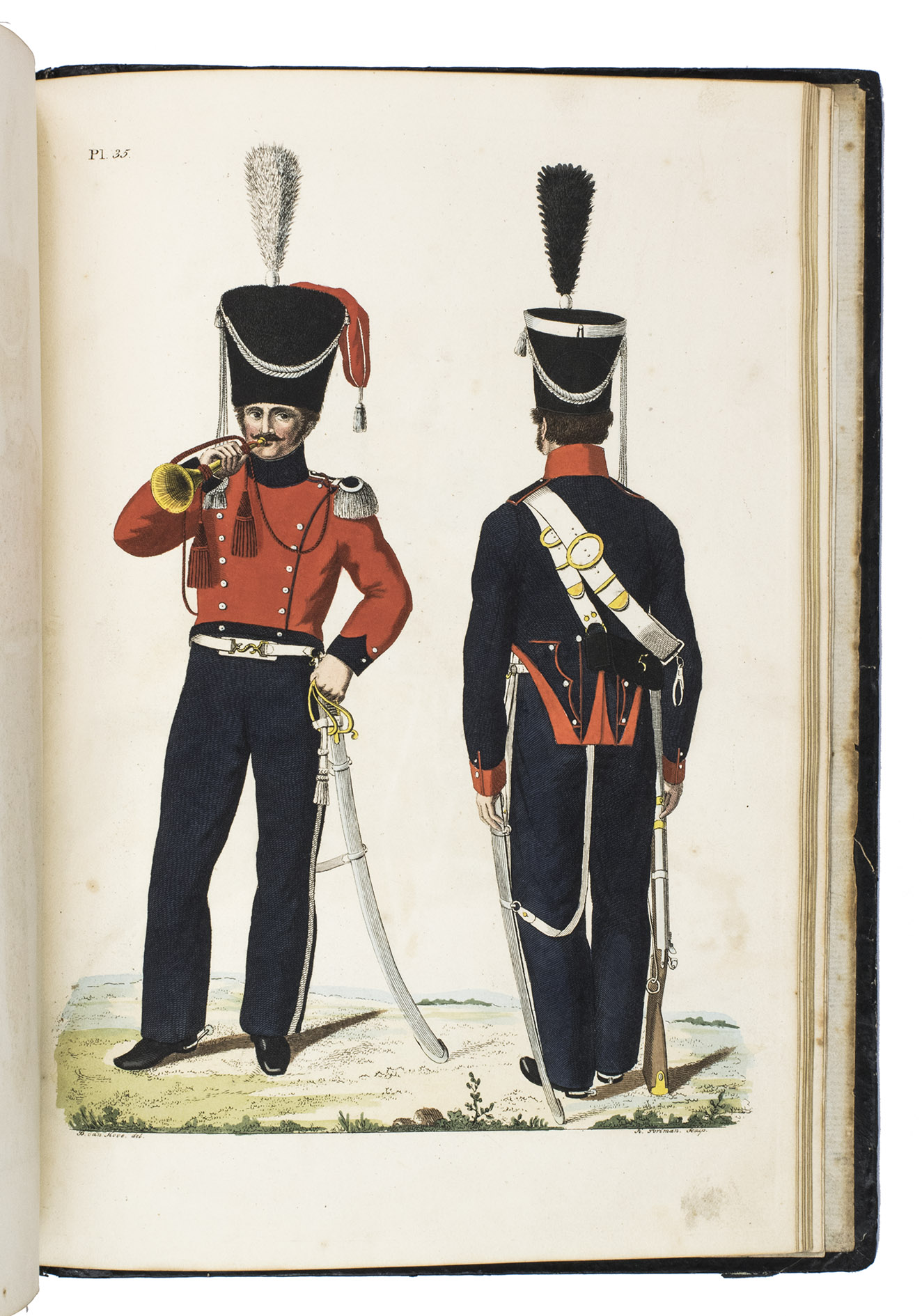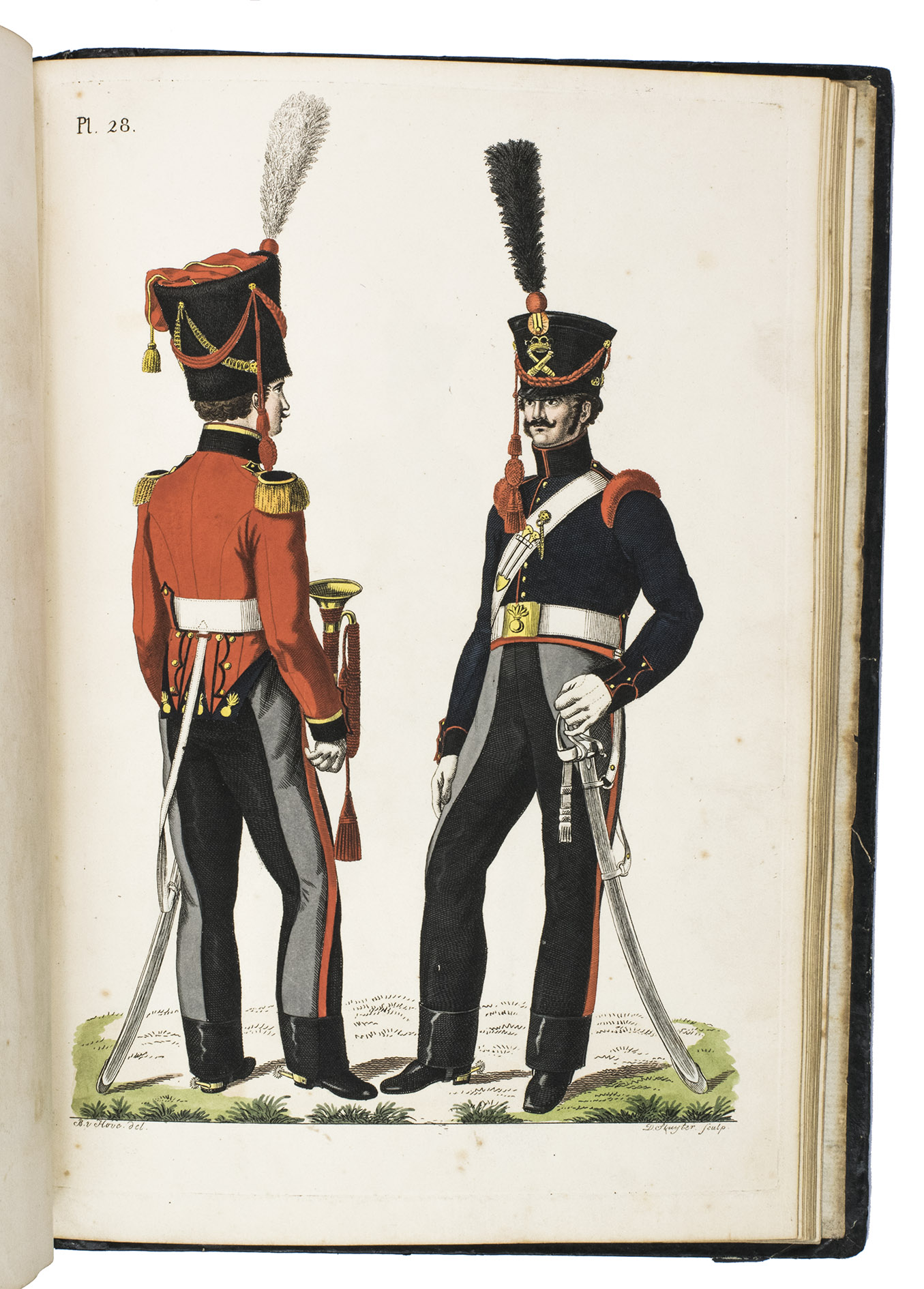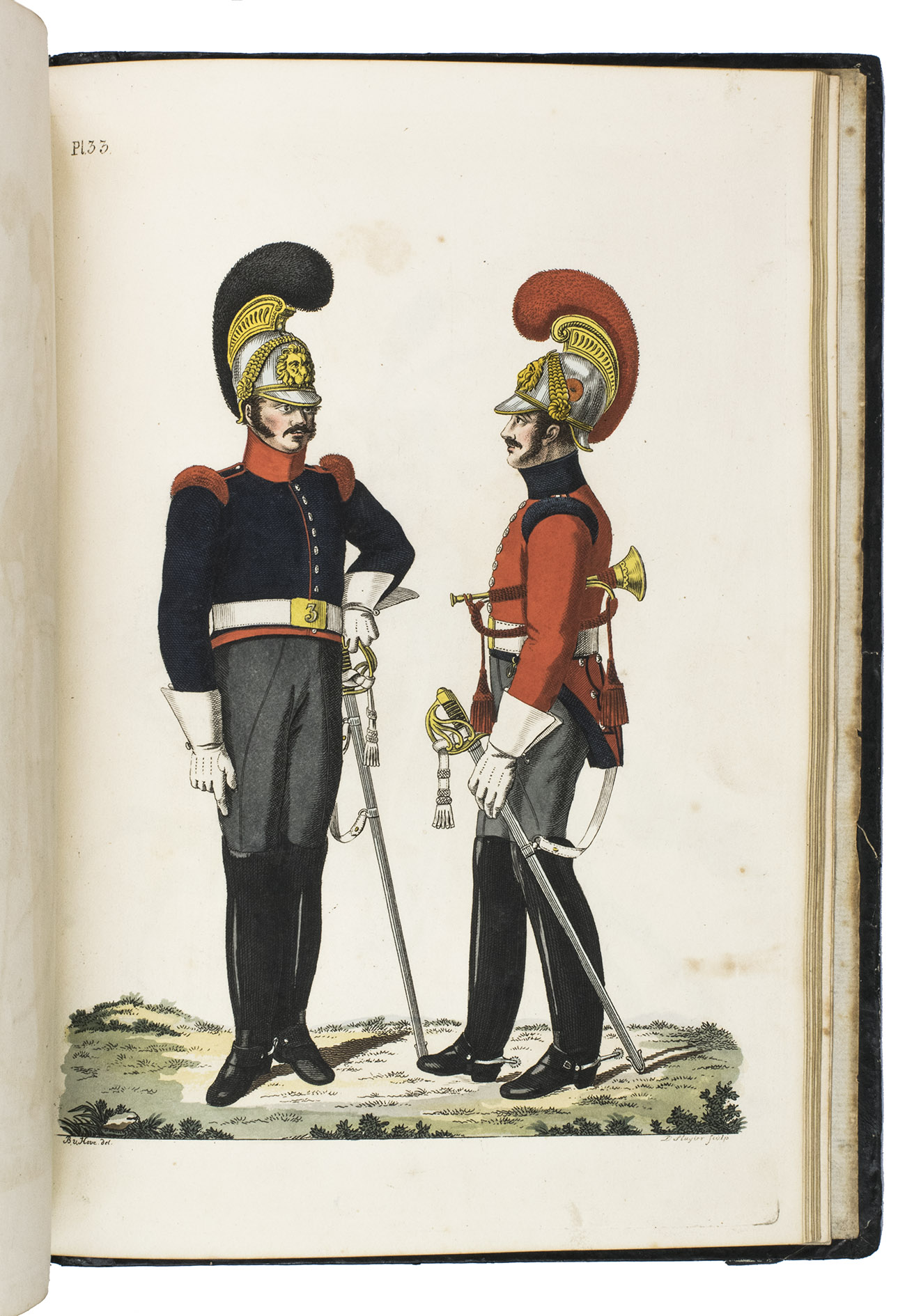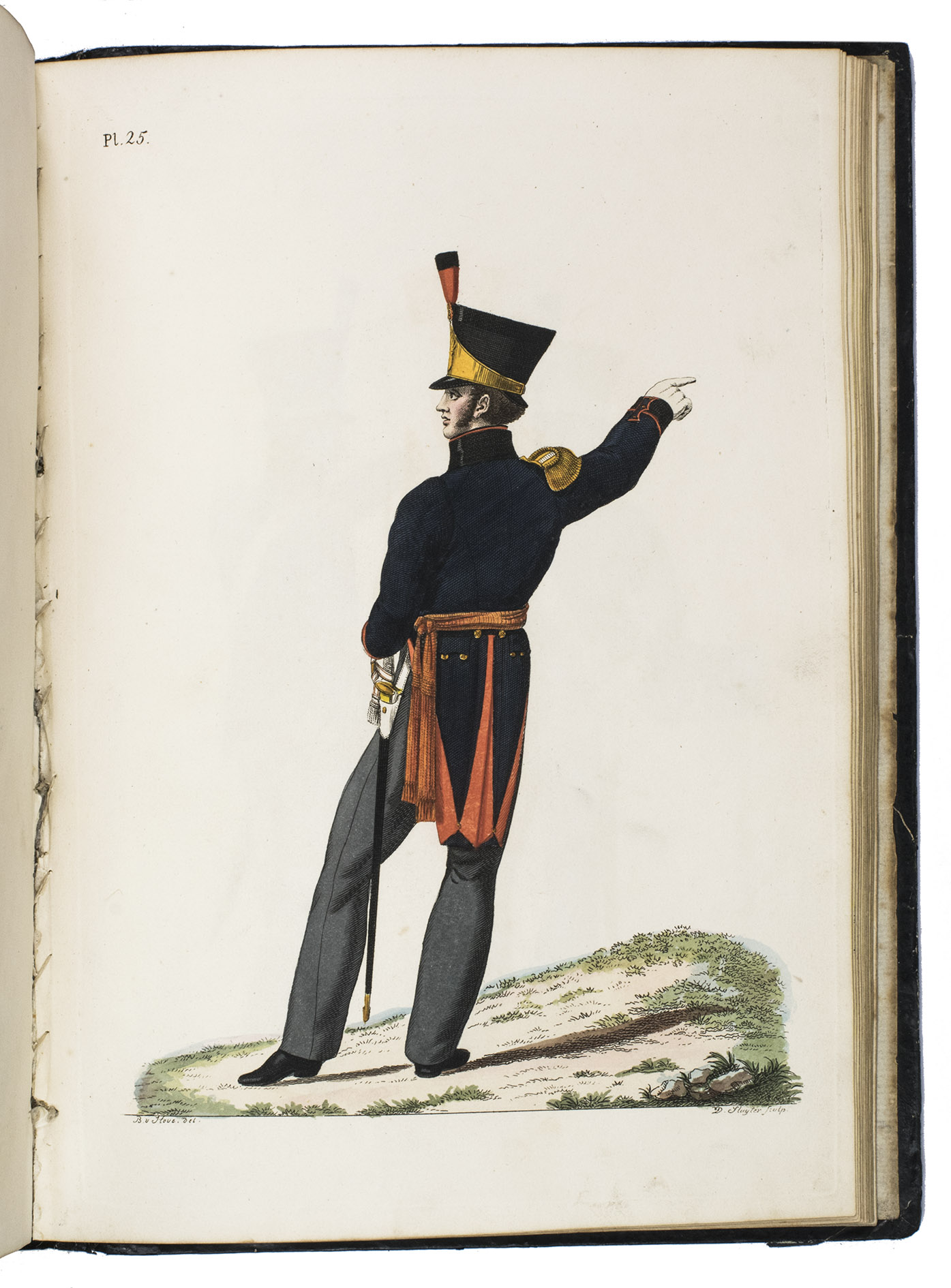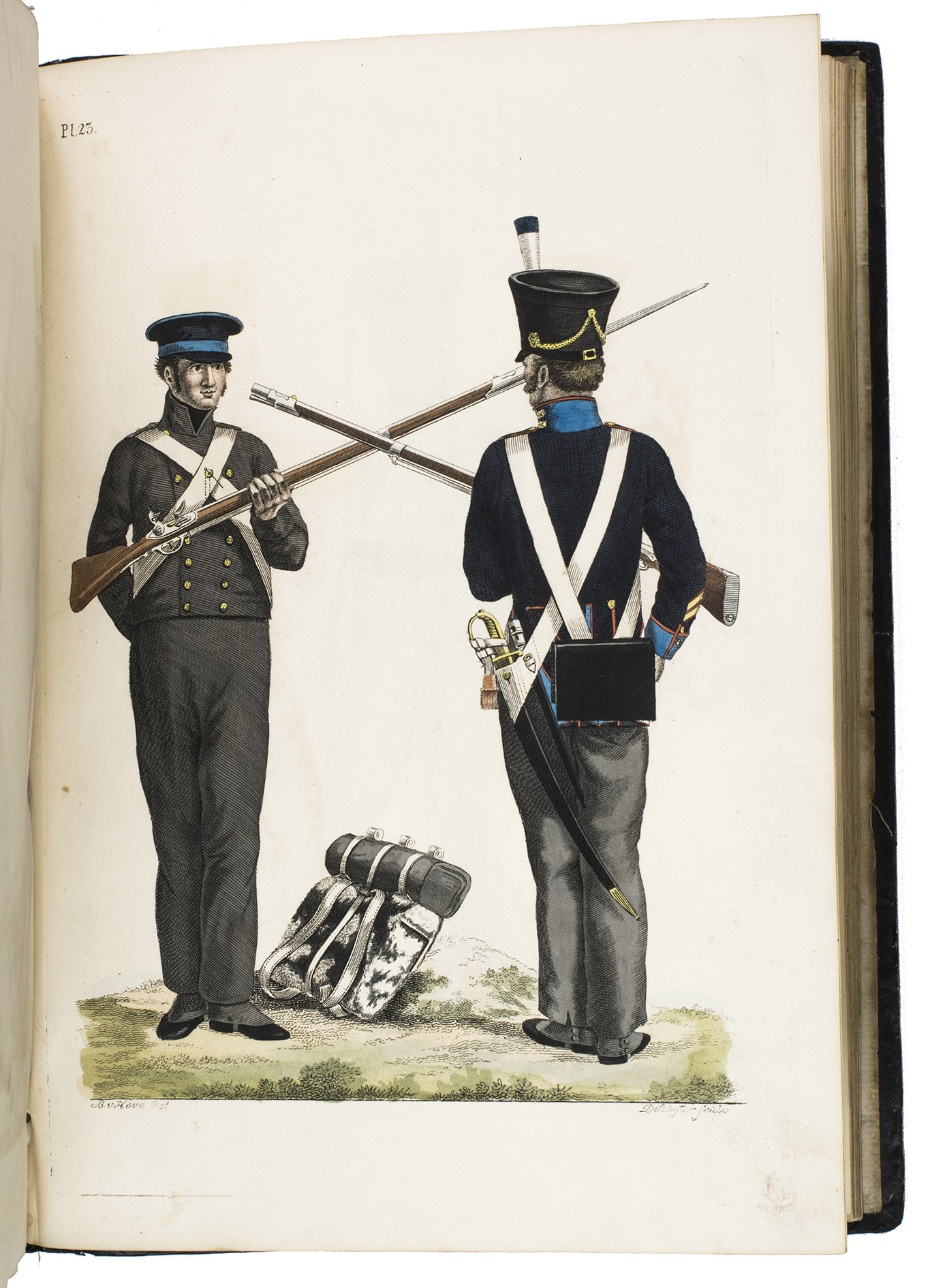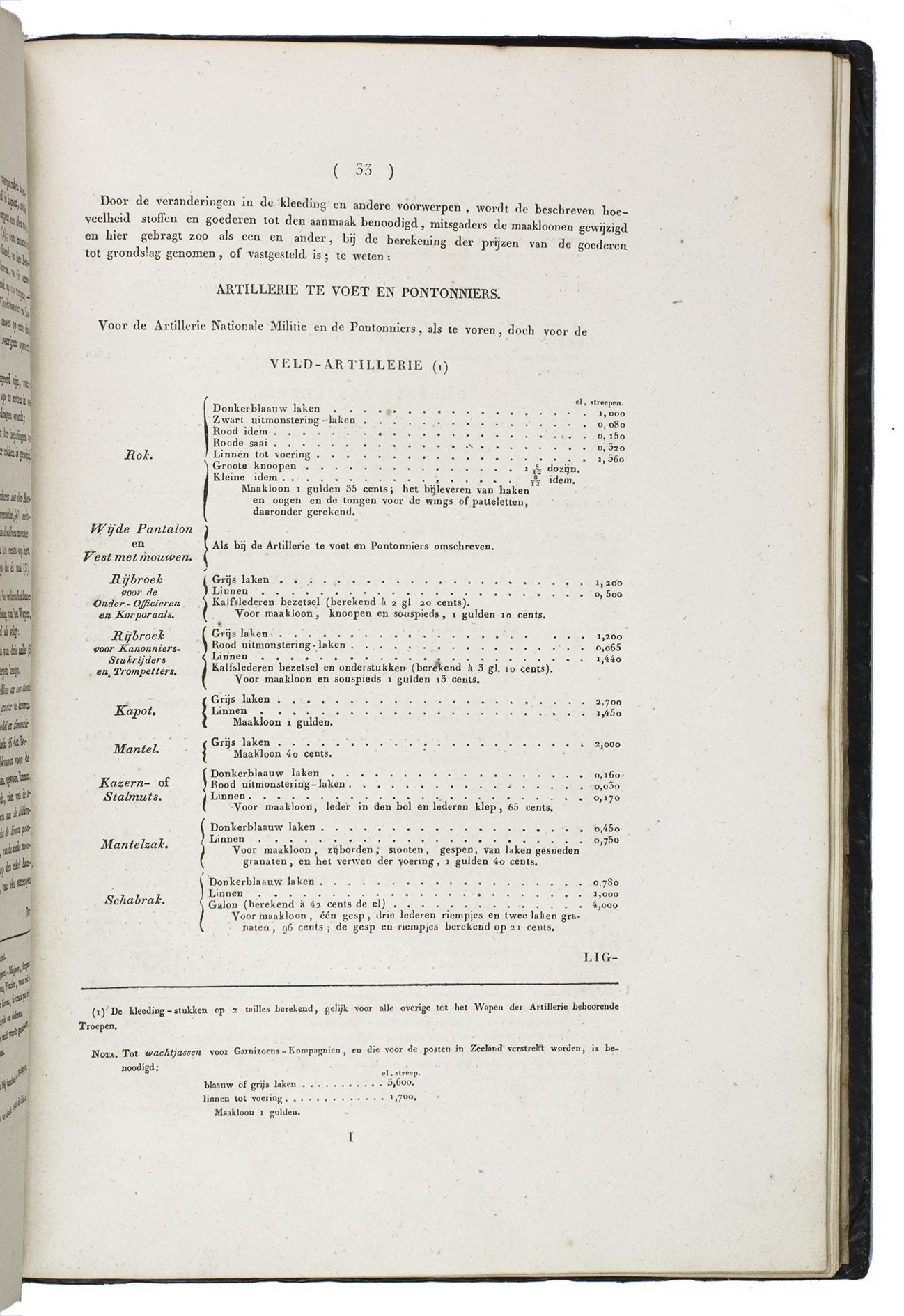TEUPKEN, Jan Frederik.
Beschrijving hoedanig de Koninklijke Nederlandsche troepen en alle in militaire betrekking staande personen gekleed, geëquipeerd en gewapend zijn ...
The Hague, Gebroeders van Cleef (printed by de gebroeders Giunta d'Albanie), 1826.
With: IDEM. Vervolg van de beschrijving hoedanig de koninklijke Nederlandsche troepen en alle in militaire betrekking staande personen gekleed, geëquipeerd en gewapend zijn.
The Hague, Gebroeders van Cleef (printed by de gebroeders Giunta d'Albanie), 1826. 2 parts in 2 volumes. Folio. With 68 full-page numbered plates (65 hand coloured and engraved, 3 lithographed), a full-page hand-coloured unnumbered engraved plate, and an engraved title page in the first volume.
Slightly later black paper, with a black paper title label on the spine, lettered in gold. The work is housed in a modern gold-tooled half black morocco clamshell box with marbled paper sides, with the title and author lettered in gold on the spine. [1], [1 blank], 10, 110, 20, [2], [2]; 4, [2], 54, 7, [3] pp.
€ 9,500
First edition of the finest Dutch colour plate work on military costumes, with 69 full-page plates. The work offers a systematic overview of all provisions regarding the uniforms and equipment of the different units of the Dutch army in the early 19th century, and the different ranks within them, including the troops in the colonies. The plates show in detail how they are dressed and armed. Complete copies of the work, with both volumes included, and all engraved plates coloured by hand, are quite scarce.
After the Netherlands were liberated from France in 1813 and became a kingdom, the government wanted a national army with standardised guidelines for its uniforms and arms. They reached an agreement on these guidelines after a few years of research and debate. Jan Frederik Teupken (1795-1831), who was employed by the Ministry of War, then offered to write them down in a systematic fashion. He collected the documents regarding the new provisions and organised the information by unit and rank for ease of use. The beautiful plates illustrate the dress code for each member of the army according to these guidelines, including medics, trumpeters and drummers, infantry, artillery, hussars, dragoons, grenadiers, cuirassiers, and the troops stationed in the Dutch East Indies and Suriname. They were engraved after designs by Bartholomeus van Hove (1790-1880), Nicolaus Heideloff (ca. 1761-1837), and Johannes Hari (1772-1849). The work is of considerable historical importance because it describes every aspect of Dutch military costume, including those that could not be shown, such as underwear, kitchen utensils, or details of the embroidery,
The first volume was published in 1826, after Teupken had worked on it for three years. However, a number of corps had been given new regulations regarding their uniforms or equipment during that time, so a second volume was published shortly after with these revisions. The work was incredibly expensive to produce, so subscribers had to pay in advance. However, they could choose whether they wanted coloured plates, which was even more expensive, and had the option to add an engraved title page to each volume. The present copy only includes the engraved title in the first volume. However, the engraved title page for the second volume was identical.
The work contains a list of subscribers. The more than 250 subscribers were primarily members of the army, including 43 in Suriname. A few copies were also given to the king, the crown prince, the minister of colonies, the minister of marine (now part of the Ministry of Defence), and the minister of war.
With a black stamp ("B R A"), on the title page of the first volume, and the author's signature on the verso of the title page of both volumes. The boards are slightly scratched and bumped. The endpapers and the first few leaves of both volumes are very lightly foxed, the upper corner of the half title in the first volume is creased, the third page 9 in the first volume is partly detached. Otherwise in good condition. Atlas van Stolk 5582; Bobins 393; Colas 2864-2865; Hiler & Hiler, p. 837; Landwehr, Coloured plates, 455; Lipperheide 2255-2256; Muller, Historieplaten, 6205; Saalmink, p. 1898 (only ad 1).
Related Subjects:





